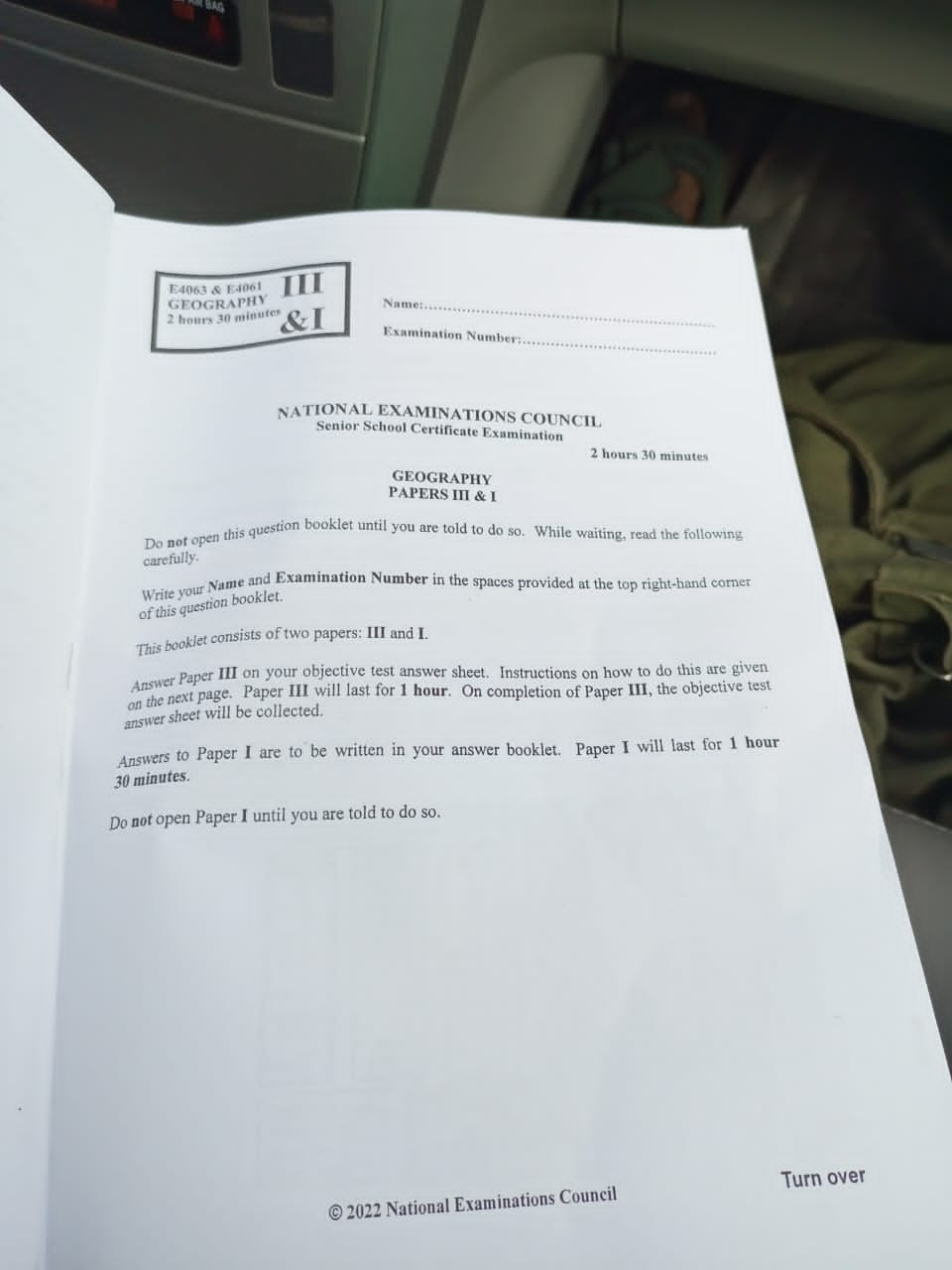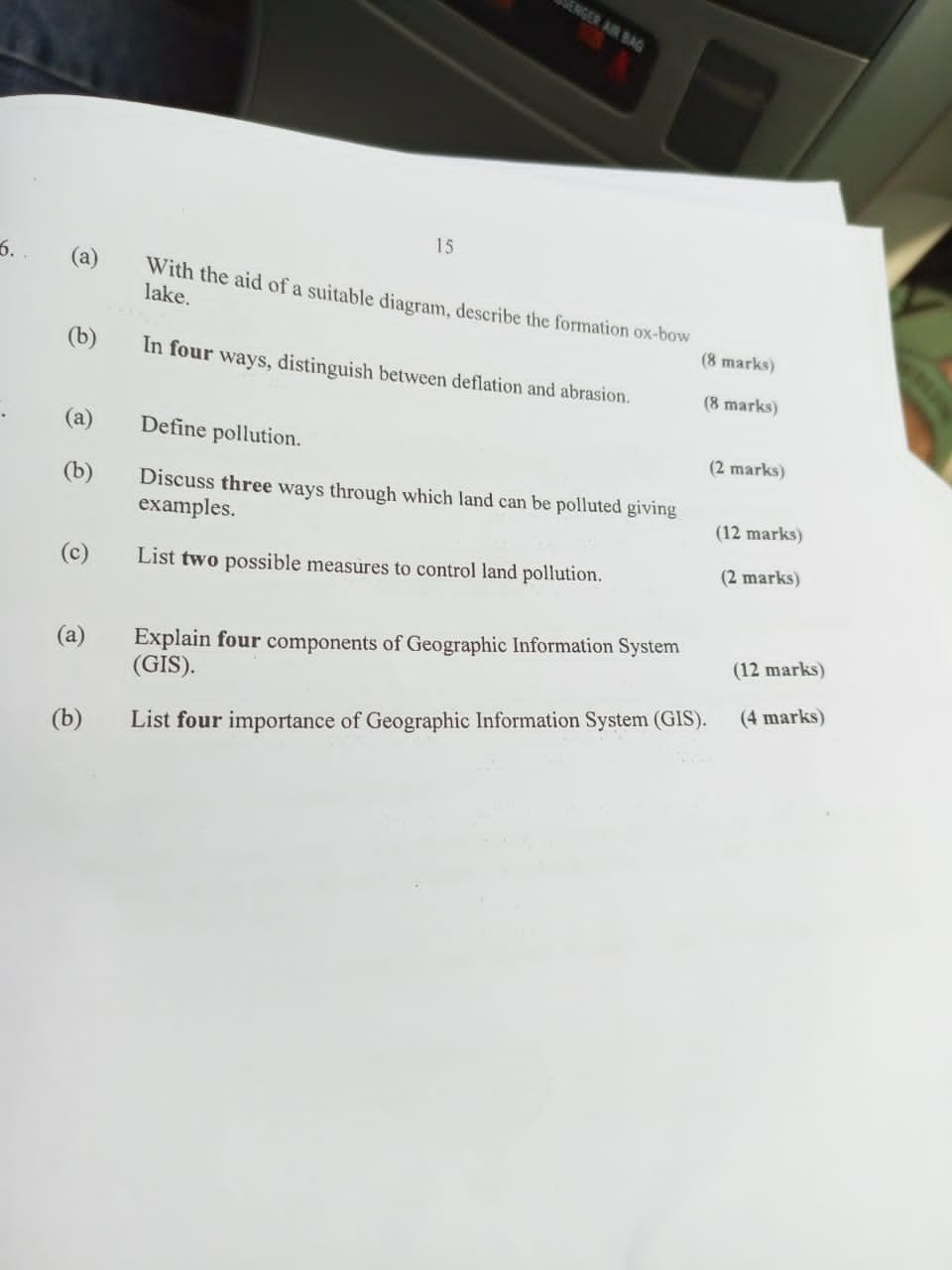NECO GCE Geography 2022 Questions and Answers
The National Examination Council (NECO) Has Scheduled Neco gce geography 2022 paper to kick off today 16th December 2022 by 3:00pm.
This brings the attention of candidates writing the paper in to searching for the best neco gce runz website 2022 where they can get neco gce geography 2022 questions and answers, gce geography essay 2022, geography practical neco gce 2022 questions and answers, neco gce geography practical question 2022, neco gce geography practical and objective 2022, today geography practical gce answer, neco gce answer in geography practical and objective 2022 and etc.
In this page you will get Neco gce geography 2022 questions and answers, neco gce geography practical expo 2022, neco gce geography practical question 2022, neco gce geography practical answer 2022, neco gce geography practical 12 December, lasu.info neco gce geography practical 2022 and etc.
How to get neco gce geography 2022 questions and answers?
To get NECO GCE Geography 2022 Essay Questions and Answers, Simply follow the procedures below:
Direct SMS: N1000 MTN CARD
Direct SMS MEANS all answers(theory & obj) will come direct to ur phone as sMs.
Online PIN: N500 MTN CARD
Online PIN MEANS The Pin to access our answers online via https://zamgist.com.ng/answer-page will be sent to u at least 4hours before the exam to access our answers.
WhatsApp: N500 MTN CARD
Whatsapp MEANS The answer will be sent to you on WhatsApp after we confirm your subscription. Add Us In WhatsApp With 08023429251.
To make the payment, Send The Following details:-
(i) MTN CARD Pin(s)
(ii) Your Name
(iii) Subject
(iv) Phone number
===> 08023429251 via WhatsApp OR
Chat us on WhatsApp @ 08023429251 by clicking here to get our account number for cash transfer payment.
Once we receive your payment, neco gce geography practical questions and answers 2022 will be delivered to you immediately.
Neco gce geography 2022 essay questions and answers

FOR NECO GCE GEOGRAPHY ESSAY QUESTIONS & ANSWERS 2022 >> CHAT ME UP ON WHATSAPP TO GET IT NOW @N500
ALSO READ:
- Chemistry WAEC GCE 2022 – Today 13th December
- NECO GCE Data Processing Practical 2022 Answers
- Waec Gce English Language 2022 Questions And Answers
Neco gce geography practical question 2022




Neco gce geography practical Objective Answer 2022
GEOGRAPHY OBJ
1-10: BDDBBDCDED
11-20: EBBCBBCCAE
21-30: DDADECECAB
31-40: EBDACBBADC
41-50: DBDBCDABEA
51-60: EEAADACAED
Full No.1 answers now available with us @N500 only. Chat me up on WhatsApp to pay and get it immediately
Neco gce geography practical answer 2022
NECO GCE GEOGRAPHY
(3a) Plutonic rocks are a type of igneous rock that forms when molten rock (magma) cools and solidifies beneath the Earth’s surface. Examples of plutonic rocks include: granite and gabbro.
(3b)
(I) Mechanically formed sedimentary rocks are formed by the physical processes of weathering and erosion, while chemically formed sedimentary rocks are formed by the chemical processes of precipitation and crystallization.
(II) Mechanically formed sedimentary rocks have a clastic or fragmented texture, while chemically formed sedimentary rocks have a crystalline or amorphous texture.
(III) The composition of mechanically formed sedimentary rocks is determined by the type and composition of the source rocks they are derived from, while the composition of chemically formed sedimentary rocks is determined by the chemical reactions that take place during their formation.
(IV) Mechanically formed sedimentary rocks can be formed on or near the Earth’s surface, while chemically formed sedimentary rocks typically form at depth, where the conditions are more conducive to chemical reactions.
(3c)
(I) Igneous rocks are formed from molten rock (magma) that has cooled and solidified.
(II) Igneous rocks have a crystalline texture, with interlocking crystals of various minerals that formed as the magma cooled.
(III) The composition of igneous rocks is determined by the type and composition of the magma they formed from.
(IV) Igneous rocks can be divided into two main types: plutonic and volcanic. Plutonic igneous rocks form when magma cools and solidifies beneath the Earth’s surface, while volcanic igneous rocks form when magma reaches the surface and cools rapidly.
NECO GCE GEOGRAPHY
(4a)
(I) Latitude: The distance of a location from the equator is a major factor that determines its climate. Locations near the equator receive more direct sunlight and have warmer temperatures, while locations farther from the equator are cooler and receive less direct sunlight.
(II) Altitude: The altitude of a location also affects its climate. Locations at higher elevations are cooler, due to the decrease in atmospheric pressure and the decrease in the amount of air (and therefore heat) that can be held at higher elevations.
(III) Distance from large bodies of water: The proximity of a location to large bodies of water can affect its climate. Locations near large bodies of water tend to have more moderate temperatures and more consistent precipitation patterns, due to the influence of the water on the local climate.
(IV) Prevailing winds: The direction and strength of the prevailing winds can also affect a location’s climate. For example, locations downwind of large bodies of water may experience more rainfall, while locations downwind of deserts may be drier.
(4b)
(I) Rain: is the most common form of precipitation, and it occurs when liquid water droplets fall from the clouds and reach the ground.
(II) Snow: is a form of precipitation that consists of frozen water droplets that fall from the clouds and accumulate on the ground.
(III) Sleet is a form of precipitation that consists of small, ice pellets that fall from the sky.
(IV) Hail is a form of precipitation that consists of balls or lumps of ice that fall from the sky.
NECO GCE GEOGRAPHY
(5a)
Denudation is the process by which the surface of the earth is worn away by natural forces such as weathering, erosion, and transport.
(5b)
(I) Climate: The climate in a given area can play a significant role in the rate of denudation. For example, areas with high levels of rainfall may experience faster rates of denudation due to the action of water on the earth’s surface.
(II) Topography: The topography of an area, or its shape and elevation, can also affect the rate of denudation. For instance, steep slopes are more susceptible to erosion than gentle slopes, and higher elevations are more likely to experience erosion due to the action of wind and water.
(III) Geology: The type of rock and soil present in an area can also influence the rate of denudation. For example, certain types of rock are more susceptible to weathering and erosion than others, and the composition of the soil can affect its ability to hold onto water and resist erosion.
(IV) Human activity: Human activities such as farming, mining, and construction can also contribute to denudation. For example, deforestation can lead to soil erosion, and the construction of roads and buildings can create channels for water to flow, increasing the rate of erosion.
NECO GCE GEOGRAPHY
(7a)
Pollution refers to the presence of harmful substances or waste in the environment that can have negative impacts on the health of living organisms or the quality of the air, water, and soil.
(7b)
(I) Chemical pollution: This type of pollution occurs when harmful chemicals, such as pesticides and industrial waste, are introduced into the environment. These chemicals can contaminate the soil, water, and air, and can have negative impacts on the health of plants, animals, and humans. For example, the use of pesticides on agricultural land can lead to the contamination of the soil, which can then be absorbed by plants and enter the food chain.
(II) Physical pollution: This type of pollution occurs when solid waste, such as plastic and other debris, is improperly disposed of and accumulates on the land. This waste can have negative impacts on the appearance of the land and can also pose a threat to the health of plants and animals. For example, large amounts of plastic waste can accumulate on the land, which can then be ingested by animals, leading to illness or death.
(III) Biological pollution: This type of pollution occurs when harmful biological agents, such as bacteria and viruses, are introduced into the environment. These agents can contaminate the soil, water, and air, and can have negative impacts on the health of plants, animals, and humans. For example, the introduction of non-native species into an ecosystem can lead to the spread of disease, which can then harm the native species and disrupt the ecosystem.
(7c)
(I) Land use planning
(II) Proper waste disposal